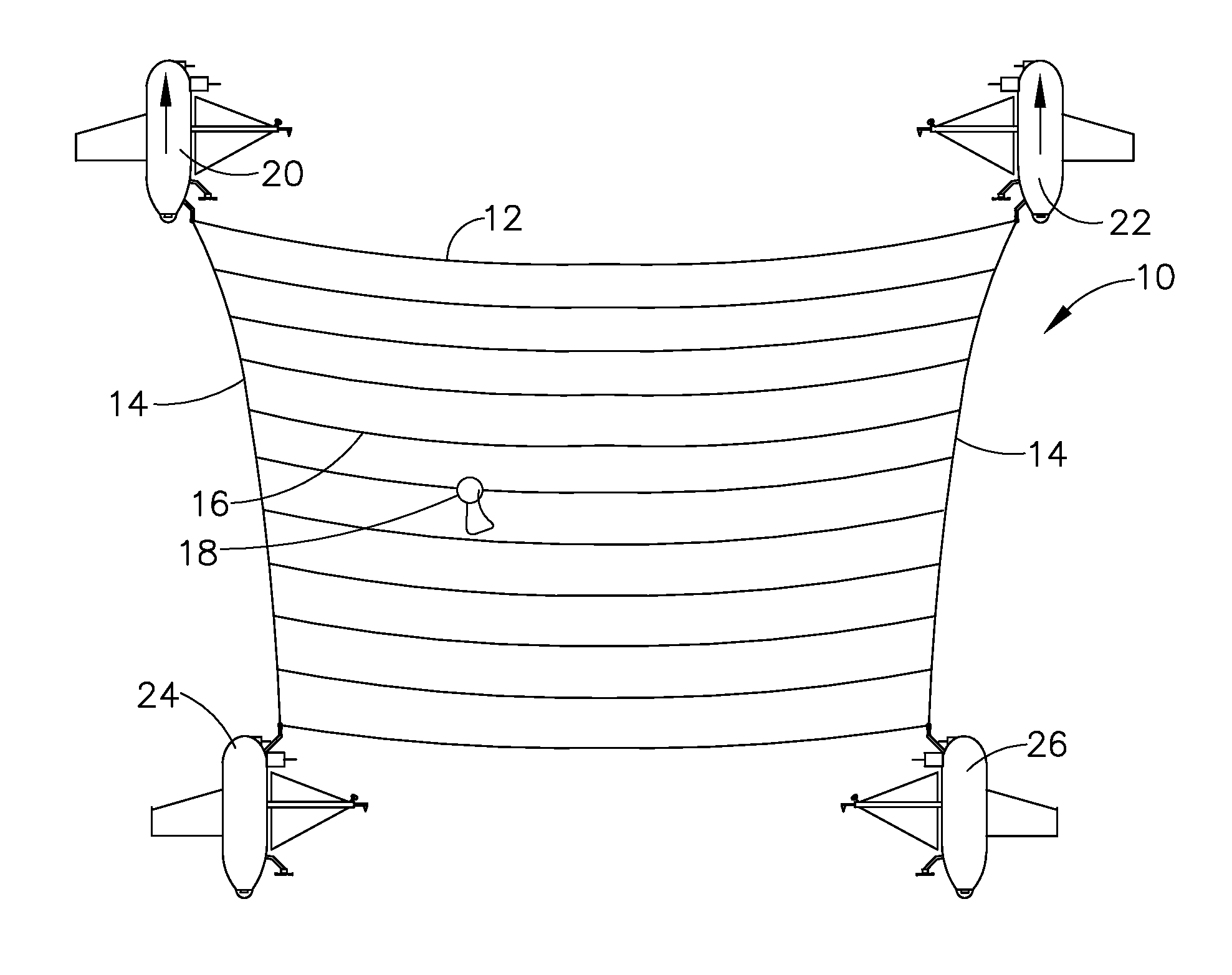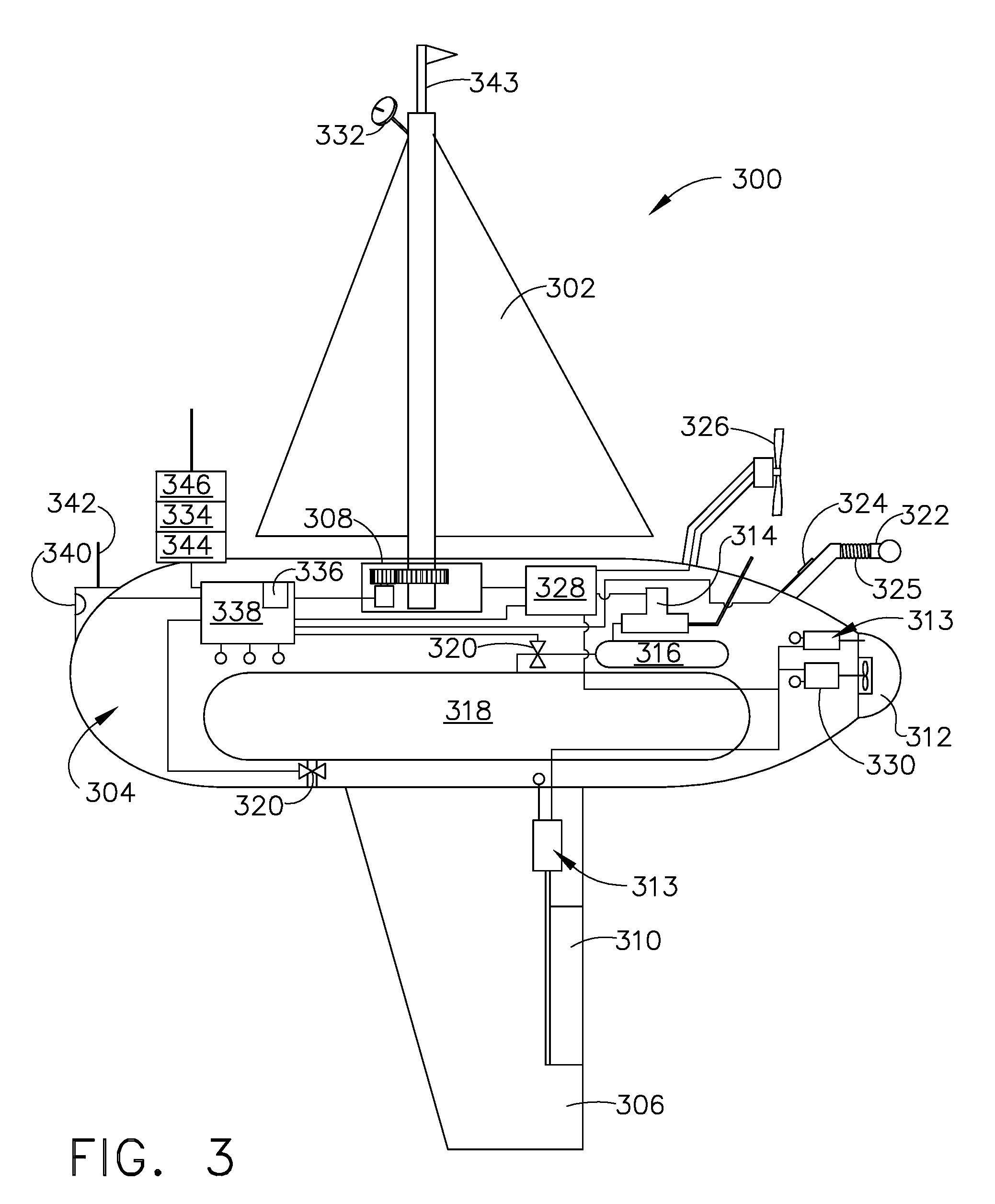Method and apparatus for robotic ocean farming for food and energy
a technology of robotic ocean farming and food and energy, applied in the field of biomass cultivation, can solve the problems of high energy price, high capital cost of photovoltaic solar arrays, and low energy price, so as to maintain longitudinal tension, maintain lateral tension, and maintain lateral tension
- Summary
- Abstract
- Description
- Claims
- Application Information
AI Technical Summary
Benefits of technology
Problems solved by technology
Method used
Image
Examples
Embodiment Construction
[0022]Referring to the drawings, FIG. 1 shows a farm 10 according to the present invention. A strong neutral-buoyancy rope 12 with two similar ropes 14 trailing back with additional (perhaps smaller diameter, but also neutral buoyancy) ropes 16 stretched between them create a support grid. In alternative embodiments, the support grid may be created using wire or rope supported by buoys at spaced intervals to provide a substantially neutrally buoyant grid. Marine plants 18 are anchored to the grid created by the rope mesh at periodic intervals (about 1 meter spacing along the ropes for California Giant Kelp with 10 meter down current spacing to accommodate the plants at harvestable size). In alternative embodiments, the support grid may be created using wire or other high strength filaments supported by buoys at spaced intervals to provide a substantially neutrally buoyant grid. The grid is propelled by a submersible towing system. Two towing boats 20 and 22, robotic “sailboats” in a...
PUM
 Login to View More
Login to View More Abstract
Description
Claims
Application Information
 Login to View More
Login to View More - R&D
- Intellectual Property
- Life Sciences
- Materials
- Tech Scout
- Unparalleled Data Quality
- Higher Quality Content
- 60% Fewer Hallucinations
Browse by: Latest US Patents, China's latest patents, Technical Efficacy Thesaurus, Application Domain, Technology Topic, Popular Technical Reports.
© 2025 PatSnap. All rights reserved.Legal|Privacy policy|Modern Slavery Act Transparency Statement|Sitemap|About US| Contact US: help@patsnap.com



